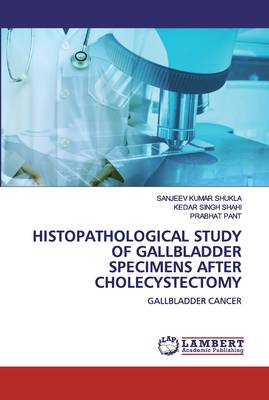
- Afhalen na 1 uur in een winkel met voorraad
- Gratis thuislevering in België vanaf € 30
- Ruim aanbod met 7 miljoen producten
- Afhalen na 1 uur in een winkel met voorraad
- Gratis thuislevering in België vanaf € 30
- Ruim aanbod met 7 miljoen producten
Zoeken
Histopathological Study Of Gallbladder Specimens After Cholecystectomy
Sanjeev Kumar Shukla, Kedar Singh Shahi
Paperback | Engels
€ 58,45
+ 116 punten
Omschrijving
Gallbladder carcinoma clinically mimics benign gallbladder diseases and often escapes detection until advanced stage. Risk factors include advanced age, female gender, cholelithiasis, porcelain gallbladder, gallbladder polyps, congenital biliary cysts, chronic infection and smoking. The role of radiological imaging is limited to the use of ultrasound, CT scans, endoscopic/FNA and histopathological examination procedures for diagnostic and staging purposes. Routine submission of all post-cholecystectomy gallbladder specimens for histopathology to detect cancer is standard practice at many institutions globally. GBS prompted advocacy for selective GBS submission based on demographic, clinical and macroscopic features as indications for evaluation, considered logical from a practical and cost-effective perspective, especially in resource constrained healthcare systems. The frequency of GBC determined, multivariate analysis of demographic and diagnostic subtypes used to identify associations and risk factors for GBC.
Specificaties
Betrokkenen
- Auteur(s):
- Uitgeverij:
Inhoud
- Aantal bladzijden:
- 80
- Taal:
- Engels
Eigenschappen
- Productcode (EAN):
- 9786200304308
- Verschijningsdatum:
- 3/09/2019
- Uitvoering:
- Paperback
- Formaat:
- Trade paperback (VS)
- Afmetingen:
- 152 mm x 229 mm
- Gewicht:
- 127 g

Alleen bij Standaard Boekhandel
+ 116 punten op je klantenkaart van Standaard Boekhandel
Beoordelingen
We publiceren alleen reviews die voldoen aan de voorwaarden voor reviews. Bekijk onze voorwaarden voor reviews.











